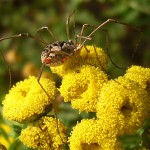Most people seem to want news they can trust, and most people I know think that’s quite hard to find. There are many, many reasons for this, but I’m going to try (notwithstanding the 8,000-word first draft of this piece) to only talk about the ones that are most helpful if you’re trying to decide whether you think a particular source is credible. And so as not to bury my lede: There is no single news source that I would treat as generally trustworthy. Think of the news as your gossipy friend: He might be full of information that you actually want to hear, but you can’t let your guard down, since you also know he’ll say almost anything for attention. So if you want to have decent news intuition without procuring a highly marketable communications degree of your own, here are a few questions that can make it a bit easier to figure out how many grains of salt you’re going to need.
Read More »Evaluating a news source
